Ryan Hall's Blog, page 373
July 31, 2015
2015 Late Summer/Early Fall Road Running Shoe Buyer’s Guide
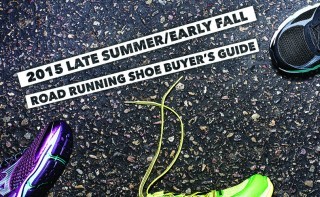
There is something really special about being fit and cruising along at a decent pace on a late-summer run if you’re wearing a shoe that’s meant for you. It’s a warm day where your muscles feel fluid and the rhythm that develops feels almost like a floating sensation. It’s a pace you can maintain mile after mile because you aren’t thinking about your feet, feet that are neither hurting from overly barren shoes nor sinking into energy-sapping sloppiness.
Our late summer/early fall shoe review is all about cruising, in some cases with guidance and control and in others with flexibility and pep.
3 Key Tips To Finding Your Next Shoe
So which shoe is right for you? Don’t just buy any random shoe or a model that happens to come in your favorite color. Find a pair that’s specifically meant for you!
Visit a local running specialty shop. An experienced shoe-fitter can help find out what you need and give you options to try on based on your foot shape, running gait and the type of training you do.
Focus on fit. The primary criteria you should be concerned with are fit, comfort and cushioning (relative to the type of running you do and your personal preference). But fit is most important.
Don’t be swayed by color or appearance. As you try on three or four shoes, your foot and brain will likely tell you which one feels the best. Close your eyes and think about how the shoes feel on your feet. Does they feel natural and move with your foot? Or do they control your foot? Are they snug or are they loose to the point of slipping? Are they flexible or stiff, soft or firm?
(All photos by Scott Draper)
The post 2015 Late Summer/Early Fall Road Running Shoe Buyer’s Guide appeared first on Competitor.com.
Badwater 135 Cools Down, Speeds Up in 2015

Photo: Shutterstock.com
The thermometer gave Badwater 135 runners a break—as much as Death Valley possibly could, anyway.
Due to new National Park Service regulations, Badwater runners started the 2015 race from Badwater Basin after sunset Tuesday, and were required to be at least 2,000 feet above sea level (50.5 miles into the race) by 10 a.m. Wednesday to adhere to the new regulations. Due to that, runners avoided the 110-plus degrees heat that makes the race famous—in part because it was a little cooler than normal in eastern California anyway. Runners started Tuesday night with temperatures in the 70s, and temperatures in Death Valley National Park barely eclipsed 100 degrees even during the heat of the day this week (the average high in July at Death Valley is about 115 degrees).
Pete Kostelnick was the winner of the 2015 race, reaching Whitney Portal in 23:27:10—winning by more than two hours. It was the fastest finishing time since 2012, and just 36 minutes off the course record.
Nikki Wynd was first female and fourth overall in a time of 27:23:27.
Past champions to finish the 2015 race include Oswaldo Lopez (2nd, 25:28:32), Pam Reed (12th, 31:24:34) and Harvey Lewis (48th, 39:12:22).
RELATED: Badwater Goes Forward With New Restrictions in Place
The post Badwater 135 Cools Down, Speeds Up in 2015 appeared first on Competitor.com.
July 30, 2015
Pre-Race Dos and Don’ts For Beginner Runners
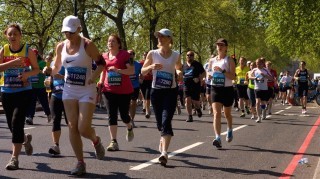
Photo: Shutterstock.com
Training for a big race is like playing a great game of chance: You put a lot of time and effort into your preparation with the hope that your commitment will pay off in the form of a personal best or the achievement of some other preset goal.
Circumstances out of your control, however, such as bad weather or a sudden illness, can sometimes put a wrench in your race plans and worrying about them can cause unnecessary anxiety. Focusing on the elements of your preparation you can control will put you in the best position to achieve race-day success—despite any unplanned for occurrences after you take off from the starting line.
Brad Hudson, founder of the Boulder-based Hudson Elite training group, and long-time running ace Reno Stirrat, who has logged a sub-2:45 marathon for five straight decades, share some of their top dos and don’ts leading into a big race.
RELATED: Race-Week Tapering Tips
Do…
…maintain your routines.
Both Stirrat and Hudson say it’s important to try to maintain your daily routine leading up to a big race. “This means go to bed at the same time and try to eat at the same time,” Hudson says. “Your mind and body thrive on that consistency, so don’t disrupt it right before you race.” Another aspect of being consistent is to think about what you did before other successful races. Hudson suggests trying to duplicate those elements as much as possible. “Know yourself,” he says. “Know what works best for you and don’t veer from that.”
…rest and relax.
Hudson says the adrenaline you experience on race day is part of the “fight or flight” response in the brain. “Try to be calm the day before [the race],” he instructs. “Bring a book to read or put your feet up by watching some TV in bed.”
If you’re having a hard time sleeping, Hudson says not to fret. “Relaxing is more important than actually sleeping the night before,” he says. “Think of how you can best be calm, so that can mean avoiding negative people and negative things.”
…believe in yourself.
Remember that you’ve worked hard for this day and believe that all the miles and workouts you’ve logged will pay dividends. “Remember that the journey is over and we have a great destination to enjoy,” Stirrat says.
RELATED: The 3 Most Common Tapering Mistakes
Don’t…
…experiment with new gear or fuel.
Hudson says he’s witnessed many runners buy new running shoes at the expo the day before their race with the hope that their new kicks will help shave off precious time. “You need to resist that temptation,” he says.
Stirrat agrees, saying, “Never wear new shoes that haven’t been broken in. Blisters and uncomfortable shoes can bring disaster to a race. A shoe works when you don’t notice them during a race. This means they are doing what they were designed to do.”
Experimenting with new types of fuel, such as gels or blocks, may upset your stomach if you haven’t tested them out in training. Same goes for shorts or singlets that could cause chafing. “Bring your gear with you to the race,” Hudson says. “Don’t buy it the day before.”
…get too caught up in pre-race excitement.
The day before a race can turn into an unexpected social event. Hudson advises his runners to limit that day-before socialization and save it for after the race. “I suggest that runners remember why they are there and to take care of their own business and to go after your goals,” he explains, “so that means watch the time they spend walking or standing around chatting.”
…overeat or over-hydrate.
It’s easy to make a regrettable mistake at the pre-race pasta dinner by overdoing it at the all-you-can-eat buffet. Also, avoid chugging a gallon of water the day before your race because you’re panicked about being dehydrated. Instead, begin gradually hydrating for longer races in the 3-4 days leading up to the event. “[You] don’t want to have that full feeling before the big race,” Stirrat says.
Stirrat also advises keeping it simple the morning of the race and sticking to your usual breakfast routine in order not to have any unplanned bathrooms stops along the course. “Bathroom stops during the race add time and the anxiety of finding one,” he says.
RELATED: The Art of Tapering Like A Pro
The post Pre-Race Dos and Don’ts For Beginner Runners appeared first on Competitor.com.
Trail of the Week: Franconia Ridge Loop, New Hampshire

Our Trail of the Week feature is made possible through a partnership with Trail Run Project.
One of the signature trails in the White Mountains of New Hampshire, the Franconia Ridge Loop offers challenging terrain and a steep ascent for fit trail runners.
This loop offers everything you can expect. Steep hard rocky terrain, yet superb panoramic views on an exposed ridgeline for a long mile! During the descent, you’ll cross several waterfalls.
The run to the top is really rocky. Once on the summit you are exposed to full weather, so bring wind-stopping clothes.
During the descent you’ll follow a river and cross several waterfall so you could bring some water purifier and refill your water bottle there.
The Data
Miles: 8.6
Runnable: 63 percent
Singletrack: 100 percent
Average Grade: 17 percent
Max Grade: 75 percent
Total Ascent: 3,758 feet
Total Descent: -3,769 feet
Highest Elevation: 5,230 feet
For a closer look, check out the interactive map, data, photos and virtual run simulator courtesy of Trail Run Project:
The post Trail of the Week: Franconia Ridge Loop, New Hampshire appeared first on Competitor.com.
Are You Getting Enough of These Nutrients?

This article first appeared on Women’s Running.
An athlete’s body is like an engine. Of course you need plenty of fuel to keep it revving properly—but calories alone aren’t enough. Vitamins and minerals function like the nuts, bolts and spark plugs. Nutrients serve to catalyze fuel burning, recovery and muscle repair and rebuilding. Just like an engine missing a nut, your body will start to sputter without them. Check out these key players crucial for athletes—and see how you can better fill up your tank.
Calcium
A key nutrient involved in the constant process of bone breakdown and rebuilding, calcium also circulates in the blood and is involved in muscle contraction.
RISK: Calcium is an electrolyte lost in sweat—so runners lose a lot of it. Inadequate calcium intake leads to low bone mass or osteopenia, which can develop into dangerously low bone mass or osteoporosis, making you more susceptible to fractures.
REQUIREMENT: 1,000mg daily
FOOD SOURCES: Milk, yogurt and cheese are concentrated sources, while dark leafy greens, bok choy, dried beans and figs also work well.
SHOULD YOU SUPPLEMENT? Evaluate your calcium intake and supplement as needed with the well-absorbed calcium citrate to reach 1,000mg daily.
Vitamin D
This hormone vitamin is essential for calcium absorption—but it also plays a role in optimizing muscle function, controlling inflammation and supporting the immune system.
RISK: Low blood vitamin D levels are linked with poor bone health and a weak immune system. About two-thirds of the population is estimated to have a vitamin D deficiency or insufficiency—so chances are you could use some more.
REQUIREMENT: 18mg daily or more to correct low blood levels
FOOD SOURCES: We are wired to make vitamin D from the sun—so sunscreen, while great for preventing skin cancer, inhibits D absorption. The vitamin can also be found naturally in fatty fish, such as salmon, egg yolks and fortified foods like milk.
SHOULD YOU SUPPLEMENT? Get your vitamin D levels checked by a doctor, and supplement to reach a healthy level.
Iron
Iron plays a key role in energy metabolism, as it helps carry oxygen to working muscles during exercise. In fact, many muscle enzymes require iron compounds in order to use oxygen at a cellular level.
RISK: If you’re a female athlete, you have a 22 to 25 percent chance of being iron deficient and a 6 percent likelihood of being anemic. Foot strike and mild gastrointestinal bleeding during running put you at a slight risk for iron loss—but menstruation is the biggest culprit. Too little iron can cause fatigue and shortness of breath. Too much iron, however, can decrease zinc absorption.
REQUIREMENT: 18mg for women ages 19 to 50; 8mg for women 50-plus
FOOD SOURCES: Animal iron (heme) is the sort of iron best absorbed by your body and can be enjoyed in lean red meat, poultry and fish. Plant iron (nonheme) is found in whole grains, fortified cereals, dried peas and beans, apricots and raisins.
SHOULD YOU SUPPLEMENT? Never self-diagnose low iron! A simple blood test will provide appropriate results. Make sure your general practitioner tests your iron levels at your annual check-up. If you choose to supplement, recheck levels in three months.
Phytonutrients
These are not vitamins or minerals per se, but natural plant chemicals are essential for good health. They act as antioxidants to enhance immune function, protect against cancer and control inflammation.
RISK: Some runners subscribe to the idea that running regularly means you can eat whatever you want—but this isn’t what your body would tell you. A lack of phytonutrients can lead to increased risk of disease and poor recovery from exercise.
REQUIREMENT: Aim for six to 10 servings daily of fruits and vegetables combined, and three servings of whole grains.
FOOD SOURCES: Fruits, vegetables and whole grains all have phytonutrients. Great sources are often colorful: blueberries, blackberries, red cabbage, mangoes, sweet potatoes, winter squash, red grapes, broccoli and Brussels sprouts.
SHOULD YOU SUPPLEMENT? Sure, there are plant powders you can add to your smoothie, but it’s best to go for the real thing.
The post Are You Getting Enough of These Nutrients? appeared first on Competitor.com.
Run Like a Champion: Dynamic Drills and Stretching
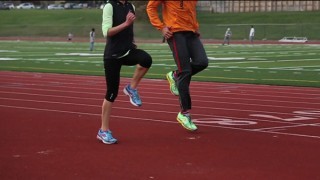
Alan Culpepper, author or Run Like a Champion, breaks down the importance of dynamic drills and stretches before a hard workout.
The post Run Like a Champion: Dynamic Drills and Stretching appeared first on Competitor.com.
Last Lap with Timothy Olson: Soul Runner
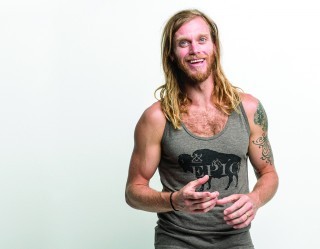
Photo: Zac Henderson
After recovering from a well-documented spiral into drug addiction many years ago, the rejuvenated Timothy Olson became one of the world’s top ultrarunners. The former cross-country runner and coach has finished on the podium at 50Ks, 50-milers, 100Ks and 100-milers, and also holds the course record (14:46:44) for the Western States 100. When he’s not running, Olson is putting the final touches on Run Mindful Retreats, his new running camps in Boulder, and working with his wife on a business to market travel-ready Paleo, vegan and vegetarian foods.
What’s the focus of your camps?
You know that positive feeling you have after a race? We want to help people tap into that on every run by connecting with nature, friends and community.
Are the camp retreats geared toward ultrarunners?
No, and it’s not an “elite” running camp either. We’ll have different running and hiking groups to meet the needs and desires of all participants. It’s to come and connect with the other attendees, connect with the land, go for some big runs and hikes.
PHOTOS: A Glimpse Inside Run Mindful Retreats
How does the idea of mindfulness come into play at these retreats?
For me, mindfulness has really been helpful in my running and my life. I’m hoping to get people psyched on the idea of meditation. Focusing on breath can help with running, a lot. It also helps in day-to-day life. Meditating and breathing opens you up to mindfulness.
RELATED: Run Mindful Retreats are Powered by Positive Thoughts
What’s your routine before a race?
I’m not a big fan of tapering. I read “Siddartha” by Hermann Hesse before every 100-mile race. It gives me something to do in the days leading up to a race and puts my mind in a good place.
Your wife is a runner, and one of your pacers at Hardrock 100. What’s it like to run together?
For us, going on a trail run together is “date night.” We can clear our minds, joke around and just play on the trail. It’s a very powerful thing for our relationship.
What draws you to certain races?
Big mountains, big trees, a beautiful mountain range and preferably a new place. I like technical terrain with challenging obstacles. It forces me to be present and in the moment. I feel it’s what trail running is about: opening all of your senses and being able to take everything in.
Will you run Western States 100 again?
Someday. I haven’t decided when, but at some point in the next few years. Western States has a beautiful course combined with great history and great people.
Your favorite post-long run food?
A bison, bacon and avocado burger with sweet potato fries.
Have you always leaned toward a Paleo diet?
It’s something I’ve morphed into over the last 6 years. I went gluten free first. It helped my stomach issues a lot. Then I went grain free and really noticed a difference in how I felt on a daily basis and how much better I recovered after long runs. I don’t eat as many gels as I used to, and my stomach stays together better during hard efforts.
Why do you run?
I run to be happy, to be wild and free. It’s very simple. You go out for a run and tap into nature, tap into your animal being inside. To me, trail running is the best way to find peace and presence.
The post Last Lap with Timothy Olson: Soul Runner appeared first on Competitor.com.
July 29, 2015
New Ultrarunning Film: This Is Your Day

Ultrarunners Rob Krar, Karl Hoagland and Caroline Boller will be featured in a new film titled “This Is Your Day” produced by USL.TV. The 52-minute documentary follows the three athletes in their final preparations before this year’s Western States 100, but mainly focuses on each athlete’s relationship to the sport of ultrarunning and how it affects those around them on and off the course.
“We get the title ‘This Is Your Day’ from a quote in an interview with Rob as seen in the trailer at the start of Western States last year,” says the film’s director Myles Smythe. “For me that title expands itself into the whole film’s concept of when you’re going to run a race you don’t do it on your own, it’s a team effort. So we’re really telling the story of the runner’s race from the perspective of their crew, pacers and entire support system.”
Initially the inspiration behind the film started with CEO and founder of USL.TV Mike Cloward, a self-described middle-of-the-pack ultrarunner, who had been exchanging ideas with Smythe about filming interactions between crew and ultra-racers within nature. At the same time Cloward was also motivated by his conversation with two-time (2014 and 2015) Western States champion Rob Krar about ultrarunning’s misconception as an individual sport, and telling the story of friends, family and volunteers that really make the sport possible.
“The runners and the actual venue is almost in the background, and the crew and the support system comes to the forefront. That’s the basis of the idea and I think the movie reflects that rather well,” Cloward says.
Besides Krar’s appearance in the film, Hoagland and Boller were also chosen to give the film more narrative diversity. Hoagland, a 50-year-old veteran ultrarunner who has completed more than 40 ultras, including seven Western States, was able to finish this year’s race under 24 hours. On the other end of the spectrum, Boller, a 41-year-old wife and mother of two who recently started running ultras professionally in 2012—having strictly run on treadmills before hitting the trails—finished her first 100-miler in 8th place for the women’s field.
Although, running 50-plus miles seems inconceivable to some people, the stories told through Krar, Hoagland and Boller are meant to transcend the film’s framework around ultrarunning.
“The message that every person in the film is saying, I can connect with on a personal level outside of my running life. I think that if someone is just wanting to watch an encouraging and inspirational film regardless of the topic, this may speak to a large number of people in that way,” Myles says.
The film premiers Aug. 19 in Flagstaff, Ariz., and it’s second showing in San Francisco on Sept. 19 includes a Q&A with all three of the starring athletes. Other showings in cities across the U.S. such as Charlotte, N.C., St. Louis, Auburn, Calif., and Lake Tahoe, Calif. are in the works and more information on future showings can be found on USL.TV’s website.
The post New Ultrarunning Film: This Is Your Day appeared first on Competitor.com.
Ireland’s Fastest Mother Returns to Rock ‘n’ Roll Dublin Half

Before she gave birth to 7-pound, 8-ounce Lucy Kelleher on June 30, 2014, the fastest Lizzie Lee had run a half marathon was 1 hour, 14 minutes, 48 seconds at the 2013 Rock ‘n’ Roll Dublin Half Marathon, claiming first place.
Less than eight months after becoming a mother, Lee, the pride of Cork, Ireland, put the eraser to her 13.1-mile personal best, running 1:14:05 at the eDreams Mitja Marato’ de Barcelona in February.
At 35, Lee is faster than ever. She’s confident motherhood is a factor.
“You have perspective and total happiness,” says Lee, who, as part of her juggling act, works as a project manager for Apple. “If you get injured you know it’s not the end of the world. Before, you would panic about everything. Now, you don’t sweat the small stuff. You’re definitely happier and calmer.”
Lee will be back at the starting line for Sunday’s Rock ‘n’ Roll Dublin Half Marathon, which doubles as the AAI National Half Marathon Championships at the distance.
The sporting life is filled with stories of women who have continued outstanding athletic careers after becoming mothers.
In 2009, barely seven weeks after giving birth, Candace Parker returned to the court for the WNBA’s Los Angeles Sparks and went on to average 13.1 points and 9.8 rebounds. Later that same year, Kim Clijsters won the U.S. Open, becoming the first mother to win one of tennis’ Grand Slams since Evonne Goolagong in 1980.
In running, Paula Radcliffe became a mother in January 2007. Less than 11 months later she won the New York City Marathon.
As for Lee, her improvement hasn’t been confined to the half marathon. In June she lowered her personal best in the 10K from 34:08 to 33:13. She insists one of the reasons for her success is a supportive family.
“I have a superb husband who is supportive and understanding,” she says. “And our parents are brilliant with my daughter. They want to see her all the time. They live near, so there’s constant support there.”
However, she does admit her routine is more regimented after having a child.
“I have no life,” she jokes. “I don’t see anybody during the week. Everything is baby, training, work. My baby is the priority. My whole schedule is around her. I don’t do anything that’s major fun, except for my baby, and that, to me, is the most fun.
Lee’s path to athletic success is one seldom traveled. She was active in high school, playing basketball and soccer. “But I wasn’t very good at anything,” she says.
In college, she stayed fit by hitting the gym and spinning. She was 26 before entering her first triathlon, an Olympic distance race of a 1.5K swim, 40K bike and 10K run. Three years later she won a 10K in 36:52. A year later, in 2010, she represented Ireland, for the first time, at the European Cross Country Championships.
There are, of course, advantages to beginning an athletic career on the late side. One, the legs have not been hammered. Secondly, the mind is fresh.
“At the age of 35, I’m still running PRs, which keeps me motivated and enthusiastic,” she says.
Her bests in the 10K and half marathon rank second among Irish women this year. But whatever you do, do not ask her if she’s dreaming of representing her country in the 2016 Olympics in Rio de Janeiro.
“I’m not talking about the ‘O’ word,” she says. “You can draw your conclusions. I’m just down in Cork, training away, doing my own thing. I’m not tempting fate.”
A woman who didn’t seriously pursue running until she was almost 30. Then, to one day qualify for the Olympics? That would be the mother of all stories.
The post Ireland’s Fastest Mother Returns to Rock ‘n’ Roll Dublin Half appeared first on Competitor.com.
How To: Active Isolated Stretching
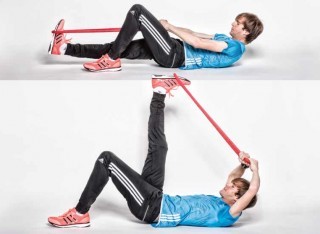
Jeffrey Eggleston, a 2:10 marathoner, regularly does active isolated stretching. Photo: Scott Draper
We can put in all the miles we want in training, but a proper stretching routine aids in the recovery process, improves range of motion and helps stave off injury.
“This hamstring stretch is for those wishing to improve range of motion, prepare muscle fibers actively pre- and post-activity, and to improve circulation and blood flow to speed recovery between workouts,” says Phil Wharton, a musculoskeletal therapist, author and 2:23 marathoner, who helped pioneer Active-Isolated Flexibility—practiced by Meb Keflezighi and other elites.
How to do it:
Step 1: Following the example above, lie on your back on a soft surface, bend one leg 90 degrees and place that foot flat on the surface.
Step 2: Put a stretching rope or strap on the arch of the other foot and, using your quads and hip flexors, lift the leg up until you hit the end of your range of motion. “Exhale as you move up and inhale as you return to start position,” Wharton says
Step 3: Perform 8-10 reps, pausing briefly at the height of each rep before lowering your leg in a controlled manner. Resist the temptation to bounce, jerk, or pull too hard with the rope.
RELATED: Monday Minute: Active Hamstring Stretch
The post How To: Active Isolated Stretching appeared first on Competitor.com.
Ryan Hall's Blog
- Ryan Hall's profile
- 21 followers



